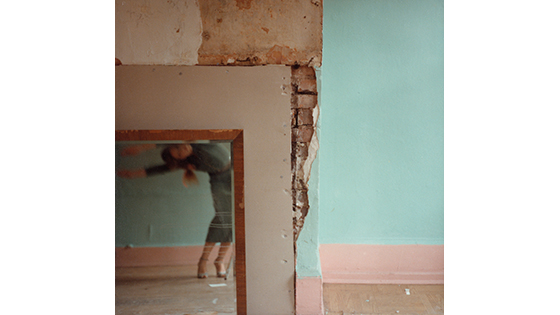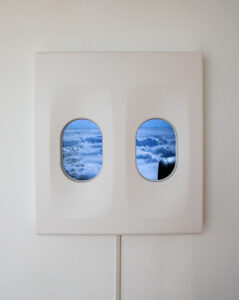Fondazione In Between Art Film is pleased to launch the first chapter of STILL – Studies on Moving Images, a research platform for specially commissioned texts investigating the field of artists’ moving images.
Through essays and conversations, the project explores works belonging to the Foundation’s collection and the practice of those artists whose works have been commissioned or supported.
The first manifestation of STILL – Studies on Moving Images is an online collection of texts that are released four times a year. Each release consists of four studies:
–”Double Exposure” features a conversation between an artist and an art writer
–”Cross-cutting” offers a ground-breaking theoretical essay
–”Close-Up” is an in-depth analysis of a selected work of art
–”First Look” examines a work that has been recently acquired by the Foundation.
At the end of each year, the four chapters will be collected in a book published by Mousse Publishing.
Thanks to the collaboration with international artists, writers, curators, and researchers, this project is conceived as an integral part of the mission of the Foundation in promoting the culture associated with moving images, with the desire to contribute to the literature and knowledge surrounding the work of artists whose vision enriches and inspires our work.
The 2021 edition of STILL – Studies on Moving Images will see contributions by:
Lucia Aspesi, Assistant Curator, Pirelli HangarBicocca, Milan
Erika Balsom, Reader in Film Studies, King’s College, London
Ferran Barenblit, Director, MACBA: Museu d’Art Contemporani de Barcelona
Richard Birkett, independent curator and writer
Zoe Butt, Artistic Director, the Factory Contemporary Arts Centre, Ho Chi Minh City
Barbara Casavecchia, writer and contributing editor, frieze; curator, The Current III, TBA21 Academy
Teresa Castro, Associate Professor in film studies, Université Sorbonne Nouvelle, Paris
Flavia Frigeri, Art historian and Chanel Curator for the Collection, National Portrait Gallery, London
Karen Irvine, Chief Curator and Deputy Director, Museum of Contemporary Photography at Columbia College, Chicago
Nora N. Khan, writer, professor at RISD in Digital + Media; editor and curator
Mason Leaver-Yap, Associate Curator, KW Institute for Contemporary Art, Berlin
Hammad Nasar, Senior Research Fellow, Paul Mellon Centre for Studies in British Art; co-curator, British Art Show 9 at the Southbank Centre
Bonaventure Soh Bejeng Ndikung, Founder and Artistic Director, SAVVY Contemporary, Berlin
Pavel Pyś, Curator of Visual Arts, Walker Art Center, Minneapolis
Valentine Umansky, Curator of International Art, Tate Modern, London
Yang Beichen, curator and scholar
With artists Yuri Ancarani, Hiwa K, Cyrill Lachauer, Clare Langan, Cristina Lucas,Diego Marcon, Shirin Neshat, Thao Nguyen Phan, Adrian Paci, Hetain Patel, Hito Steyerl, and Wang Tuo.
The first chapter of STILL features a conversation between artist and filmmaker Shirin Neshat and Valentine Umansky, an essay by Pavel Pyś that explores visual technologies and representation, an in-depth analysis of Cristina Lucas’ three-channel installation Unending Lightning (2015-ongoing) by Ferran Barenblit, and a text by Yang Beichen examining Wang Tuo’s video The Interrogation (2017).
Developed by the team of Fondazione In Between Art Film, STILL is conceived by Alessandro Rabottini, Artistic Director and edited with Bianca Stoppani, Editor, together with Leonardo Bigazzi and Paola Ugolini, Curators.
Coordination: Alessia Carlino, Project Manager
Design: Mousse Agency
Fondazione In Between Art Film
Fondazione In Between Art Film fosters dialogue between the different artistic languages of our time, mapping new borderlands between video, cinema, and performance.
Created at the initiative of its president Beatrice Bulgari, the foundation supports the work of artists and institutions that explore the field of the moving image through exhibitions, new productions, and international partnerships.
The Foundation carries on the work of the production company In Between Art Film, founded in 2012, which forged partnerships with major projects and institutions such as the 55th International Art Exhibition of La Biennale di Venezia, MAXXI in Rome, Tate Modern in London, Documenta 14, Manifesta 12, miart in Milan, Centre d’Art Contemporain in Geneva, Lo schermo dell’arte in Florence, Dhaka Art Summit, and Loop Barcelona.
|
STILL – Studies on Moving Images |
Cover Image: Wang Tuo, The Interrogation, 2017. Single-channel HD video, 18:35 minutes. Courtesy of the artist and Fondazione In Between Art Film Collection





















